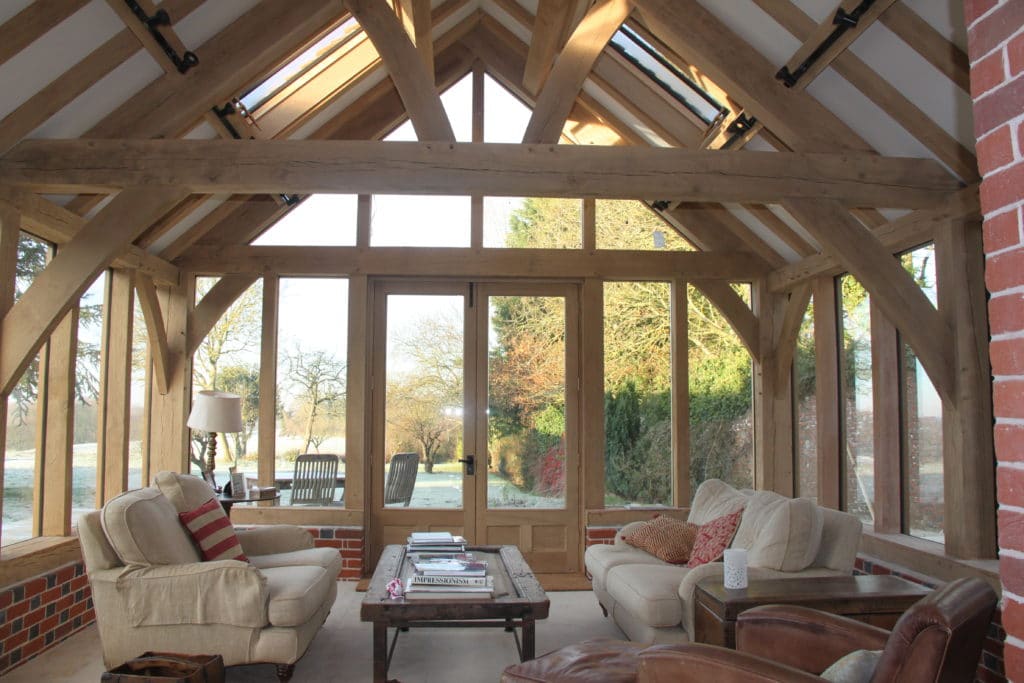If you are thinking of remodelling your kitchen find out how to get the most from your architect with these top tips from Western Building Consultants.
Will my architect design the kitchen?
Yes and no, whilst some architects may specify the kitchen in detail, right down to the bespoke joinery details this is quite unusual and potentially costly. More commonly the finished kitchen details can be designed by the kitchen supplier. Your architect should however be able to add value to the process by designing the space to suit a layout or style of kitchen and ensure it fits everything you need into your dream space. Including basic rules and principals of layout, sizing of appliances and common trends.
All designs should start with your detailed brief, at Western Building Consultants we encourage people to list in as much detail as possible your needs and desires for the kitchen space including things like type of cooker or fridge dimensions (that American fridge freezer has to fit somewhere, right?) or do you want to include an island, space for dancing or even a bar? Having a detailed list allows the architect to start to look at where these key bits of kit or space will go and whether it can all fit within your floor plan.
If you are having an extension the architect can start to tailor some of the form of the extension based on your space requirements, they can also look to utilise the existing structure by remodelling to gain additional space or better flow.
Remodelling can be designed in a cost effective way, working with the structure not against it. Your architect should inform you where a key structural alteration may cost over and above the “norm”. This allows you to make a cost benefit analysis of the proposal and decide if it really is worth hiding all the beams and taking out the corner of the house! They may also be able to cleverly hide some structural features such as pillars within cabinetry to disguise them.
The architect can also incorporate layout designs that help with your kitchen, the walk in larder is making a big come back as it can minimise the amount of wall cupboards you need, saving on cost but more importantly allowing the space to feel more open and airy.
Other issues such as noise from washing machines etc. should be considered in open plan layouts and where possible mitigated with the use of utility rooms/cupboards. A utility room might also be the perfect opportunity to consider how you deal with clothes organisation. A top tip from Western is to incorporate a sorting system pre and post washing your clothes, preferably near the laundry area. You can also use overhead drying racks in utilities with oversized heat controllable radiators to help dry delicates during the winter months. (It is important in utilities to have an extract fan preferably with a humidistat control to remove excess water from clothes drying to outside)
By pre and post sorting at point of washing you will dramatically reduce the amount of work sorting the clothes into colours etc. and later on putting the clothes away giving you more time to enjoy your lovely new kitchen.
The layout design should also consider how you want to use the space, will it be an open plan space or more cellular? Do you want your cooking facilities to be facing a particular area or space to entertain or supervise children? Do you want built in seating?
Your layout should consider where the best natural light in the property is, or as we call it the premium floor area. Commonly this means designing ancillary kitchen rooms such as utility rooms, boot rooms, bathrooms, pantry’s etc. In areas where there is the worst natural light and least connection to the outside world.
Your architect should suggest kitchen layouts that maximise the use of natural light. This will make the space bright, airy and importantly more sustainable, as a reliance on electrical lighting can increase energy consumption.
The positioning of roof lights and windows to maximise light penetration to the kitchen is always really important and should be considered by your architect. Utilising windows to give views of the garden or wider landscape can also give a better connection to the garden. Whilst clever use of cabinetry and picture windows can result in additional functions like this storage and reading area. Big gable end windows can also be great features giving a view of the sky often cut off with standard height windows and can increase connectivity with the wider environment and weather.
You may also want to consider how connected to a kitchen garden the design is. Offering easy access to herb planting or a veggie patch can increase the enjoyment of a kitchen and put fresh Ingredients at your finger tips, if you are a keen cook. Our MD James Dean’s thoughts “I love cooking and personally I have always designed my own garden to have a herb section near the kitchen. I enjoy the fact I can stroll outside cut fresh herbs that I will use in my cooking, it’s like having an outdoor spice rack. Whilst I have an allotment to grow veggies I grow all my herbs close to the kitchen for maximum freshness, it’s also great fun to include my daughter when cooking allowing her to smell the different fragrances of the herbs and helping to pick them for dinner”
At Western we always try to design our kitchens so they connect to outdoor space, building in clever options like verandas and roof overhangs to provide shade to south facing rooms in the summer to reduce over heating and to provide protection against damp weather. The design should also consider the flow and use of the garden some times it can be suitable to reduce the footprint of an extension to give more usable outdoor space such as a dining or BBQ area.
The doors that connect you to this space are also important whether it’s large bifolds that open up to bring the outside in, french doors that maintain a traditional aesthetic or sliding doors that offer maximum glass to frame ratio. The openable doors need to be designed for practical everyday use and flow around the building. Your architect may be able to technically design a level threshold between the doors by specifying the correct door frame threshold and perimeter drainage. This will improve the connection to the outside visually and give better access for people that have mobility issues. For an even stronger connection to the outside ask you architect about matching materials inside and out to get a seamless transition between spaces.
Think long and hard about your budget for the kitchen, you can save a lot of time by sharing this with the architect. They will likely be able to point you in the direction of local suppliers that match your budget. So that you don’t wast time with companies that don’t match your cost expectations if they can’t this should always be your first question to a kitchen supplier “what is the typical total price for one of your kitchens?”
Simple kitchen design standards such as the working triangle and minimum clearance between units should be a consideration when your architect presents to you a potential kitchen layout. They should also challenge your brief if part of it contradicts these standards (for example islands are commonly used in tight spaces and can make them feel cramped)

Ask your architect about flexibility, perhaps you want to design in partitions that can be used to make an open plan layout more cellular or turn a functional kitchen dining space into an open plan entertaining space with the ability to temporarily add larger tables, (Slade ask a good question in their merry Xmas everybody hit “are you sure you’ve got the room to spare inside?”) Joking aside pets are also a big part of our lives and how does that open plan kitchen interact with that new puppy? Do you design in spaces for beds, feeding, access to the garden or litter trays? Do you want the ability to flexibly contain your pets to certain areas of the house. These are all important things to consider when thinking about the practical use of the kitchen.
If you are extending your home your architect should challenge you to consider how you want the space to feel. At Western we often design vaulted ceilings into our kitchen spaces or raise the ceilings heights of the extension to give a more impressive feeling of space. This can also allow us to introduce additional architectural features that make the space interesting. From exposed or timber oak beams, feature hanging lighting to beautifully crafted timber trusses a good architect will design in features that enhance the character and feel of the space.
Kitchen design is a fashion industry, with new products and designs being introduced to the market regularly. It is important that your designer keeps abreast with the latest trends, fashions, layouts and kitchen gadgets. At Western Building Consultants our designers often meet with kitchen suppliers and attend CPD around kitchens to keep well informed. In some instances you may want your kitchen to follow the design narrative of the existing building from an industrial feel to heritage bespoke hand painted kitchens that suit a rural aesthetic and most likely to be used in listed buildings. Although designing a highly modern kitchen into a heritage environment can also create an interesting juxtaposition.
You should also consider your long term plans for the building and let your architect know. Is it a forever home or a five ten year plan? This will help you consider whether to make the space really individual being as bold with your aesthetic as you are or to opt for a more generic design suitable for resale. If you’re not sure classic designs such as inset shaker kitchens can easily be remodelled with fashion changes, handles colours etc. and are relatively timeless.
Your architect during the technical stage of design should be able to consider the electrical lighting of your kitchen. We believe that well considered lighting can make a kitchen space and is often the thing most talked about by visitors. Using LED technology we now have a bigger array of lighting products available than ever before, from smart concealed LED lighting to wash walls, worktops and floors with light or feature hanging lights getting the design of the lighting right is important.

Oak extension in Wiltshire by WBC, constructed by English Oak Buildings, Bath.
If you are having an architect provide contract administration services through your kitchen build they will be able to advise you about procuring the kitchen from the supplier. Are you going to get the kitchen yourself or is your main contractor going to supply and fit? This is a really good question by procuring it yourself you may save some money on the contractors mark up (although this may often be offset by the contractor being able to negotiate a trade discount with the supplier) but if any part of the kitchen build is held up by supply issues you as the client are liable to the contractor for the time delay and potential cost under most contracts. In contrast if the contractor is supplying the issues will fall under their jurisdiction and the hassle of chasing the supplier to deliver is left to them.
At Western Building Consultants we have a three step approach to all our residential projects, 1 feasibility and concept, 2 technical design and 3 construction. When designing a great project the architect has to consider the kitchen throughout each of these key stages and can help at each step to deliver you that perfect kitchen with the least amount of hassle. Why not book a free initial consultation today?